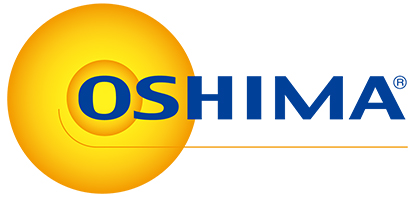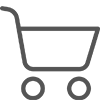In the textile industry, inspecting fabric defects has always been a labor-intensive and detailed task. This task relies on manual inspection, where inspectors must use their naked eye to identify each potential defect. An experienced inspector may identify up to 200 defects in an hour, achieving an approximate detection rate of 70%. However, this method is not only time-consuming but also sees a decline in efficiency and accuracy as inspectors' eyes fatigue over time. manual inspection results can be influenced by the inspector's subjective judgment, leading to inconsistencies.
To overcome these limitations, Automated Optical Inspection (AOI) and Artificial Intelligence (AI) image recognition technologies have recently been employed in the textile industry. Theoretically, this technology can improve efficiency. However, despite the high detection rate, image recognition still has the problem of insufficient accuracy and not being able to fully cover all fabric defects. Even with visual fabric inspection system, secondary re-examination must be performed by experienced fabric inspectors, which diminishes the effectiveness of autonomous optical inspection. Therefore, even with the latest technology, it is obvious that the problems cannot be solved comprehensively. Textile and garment factories must understand the core features and limitations of AOI and AI technology when choosing fabric inspection tools, in order to make the most suitable technology investment decision for their own production needs.
Automated Optical Inspection (AOI) Approach: Definition and Function
Automated Optical Inspection (AOI) uses high-resolution cameras to capture fabric images and identifies various defects based on preset standards, such as color differences, structural damage, or uneven textures, to assess fabric defects.
Applications:
-
Speed and Efficiency: AOI image recognition can inspect a large amount of fabric in a short time, much faster than manual inspection.
-
Reduction of Human Error: The automated process reduces issues caused by human fatigue or subjective judgment errors.
-
Consistency: Once the inspection standards are set, AOI image recognition can consistently repeat the inspection process.
Limitations:
-
Poor Adaptability: For unseen fabric defects, only well-defined defects can be detected.
-
High false killed rate: AOI optical inspection usually uses conventional algorithms with strict parameters, making the system overly sensitive to external factors such as light and shadow, which can lead to overkill situations. This can lead to overkill situations. Therefore, this usually requires additional labor and time costs for re-inspection.
-
Setup dependency: Specialized knowledge is required to set up the test parameters, which may require additional time and cost.
-
High-quality laboratory conditions: AOI systems rely heavily on the precise coordination between the light source, camera and lens. In particular, the texture, characteristics, and weave of fabrics require a strict testing environment to minimize the risk of misjudgment.
Artificial Intelligence (AI) in Fabric Defect Inspection:
AI image recognition involves machine learning or deep learning to train models on how to identify fabric defects. The process relies not only on preset rules but also on analyzing a large amount of fabric image data to train the model, enabling it to recognize defects from basic to complex or rare.
Applications:
-
Flexibility and Adaptability: AI models can continuously learn and adapt to new types of defects, gradually improving identification accuracy over time.
-
Handling Complex Defects: Capable of identifying complex defects caused by multiple factors, such as irregular patterns or mixed fibers.
-
Reduced Need for Pre-set Parameters: AI can optimize its detection algorithms through self-learning, reducing reliance on professional settings.
Limitation:
-
Data Training Requirements: Achieving high accuracy requires extensive labeled training data.
-
Time and Resource Intensive: Initial training processes may require significant computational resources and time.
To summarize, AOI and AI have their own strengths and limitations, with AOI requiring more samples and longer setup times than AI software's fast learning and low sample requirements. However, in modern textile applications, they are often complementary. AOI can quickly provide rule-based detection, while AI can gradually take over, providing deeper and more comprehensive inspections, especially effective in handling complex or unknown defects.
Advantages and Challenges of Image Recognition Technology in Fabric Inspection:
Advantages:
-
Immediate Problem Detection and Elimination: Reduces recalls and waste of defective products, enhances customer satisfaction, and increases the likelihood of repeat orders.
-
Reduces Human Error: Lowers errors due to fatigue and inadequate lighting during manual inspections.
-
Reduces Inconsistencies in Quality Standards: Lowers customer complaint rates, improves return on investment, and allows factories to accept large orders, increasing profit potential.
-
Enhanced Tracking and Traceability: Image recognition technology can provide complete fabric inspection records, making product quality tracking easier and more transparent.
-
Lowers Production Costs: Effectively addresses fluctuations in production capacity caused by staff turnover, fatigue, and recruitment challenges.
-
Enhances Brand Image: Using advanced AI and AOI technologies not only improves product quality but can also serve as a marketing tool to enhance brand image, demonstrating a commitment to innovation and quality.
Challenges:
-
Need for Secondary Inspection: Despite AOI's speed, its lack of accuracy often necessitates secondary inspections by technicians, adding costs and reducing efficiency. Utilizing AI for deep learning enhances initial detection accuracy, reducing reliance on secondary manual checks.
-
Dependence on Human Experience: The quality of defect detection depends on the user's "judgment ability." AOI relies on preset parameters and has limited capability to recognize new types of defects. Unlike AOI's rigid rules, AI engages in deep learning, continuously improving based on human judgment results, giving AI significant advantages in identifying diverse and complex defects. However, this does not mean AI is infallible; poor quality defect images or incorrect initial categorization can also decrease the accuracy of the AI model.
-
Inconsistency in Standards Between Brands and Factories: Different brands and factories have different defect definitions and inspection standards. Increasing the configurability of the system ensures that inspection standards can be adjusted according to different customer requirements.
-
Privacy and Data Security: The large-scale use of image data can pose data security and privacy concerns. Strengthening data security measures ensures the safety and compliance of data during processing.
-
Cost-effectiveness and Return on Investment: Many fabric inspection machine suppliers now target the low-margin textile industry by offering lease or inspection services at a low initial cost. However, in the long run, ongoing leasing expenses may outweigh the entire cost of owning equipment. Furthermore, leasing implies less control and flexibility over the equipment, with total reliance on the seller. Furthermore, organizations cannot derive asset value from these devices, such as through retrospective studies or technical integrations.
Three Key Considerations for Choosing Image Recognition Tools:
For businesses transitioning from other industries to the textile sector, although they may have some understanding of image software technology, they often lack practical knowledge of textile characteristics and factory operational pain points. For example, fabrics should not be stretched during the inspection process to avoid texture distortion or weft skew defects. The presence of wrinkles can also interfere with the system’s accurate judgment of textures, and maintaining the flatness of the fabric when it is fed into the machine is a prerequisite for improving inspection efficiency.
Effectively using visual recognition technology not only requires inheriting experience from seasoned professionals but also necessitates significant on-site time investment by inspection machine suppliers (typically 1 to 6 months, depending on the type of fabric and the variety of defects) to adjust and calibrate the recognition models. Therefore, establishing a consensus between the inspection side and equipment suppliers, as well as the patience and continued efforts of both parties, are critical to the successful integration of the technology. Only through such cooperation and effort can visual recognition technology be effectively applied in the textile industry, thereby enhancing production efficiency and product quality.
Whether it's AOI or AI, image recognition requires time for training. Therefore, selecting a professional fabric inspection equipment manufacturer, suppliers that familiar with fabric defects, and manufacturers who understand the pain points and future development of the textile and garment industries can help minimize the initial time investment.
Conclusion
Many textile and garment manufacturers initially believe that AI and AOI tools can be immediately operational upon acquisition. However, these technologies require extensive initial preparation, including significant manpower and time investment. To enhance the intelligence and efficiency of the system, it is essential to collect and clearly categorize a large volume of defect images.
With half a century of experience in manufacturing inspection equipment, OSHIMA has collaborated with Taiwan leading textile factory and industrial technology research institutes to develop an AI fabric inspection machine that addresses the inability of traditional AOI and AI inspection machines to effectively handle elastic fabrics. Our AI fabric inspection system also covers common types of defects found in the market, such as color stains, spots, oil stains, holes, snags, abrasions, and broken wefts. Additionally, the system provides the color difference reports required by the industry and features a user interface designed to match factory operating habits, making it a practical image recognition system for textile quality control. Please contact us if you are interested in claiming a free report.




